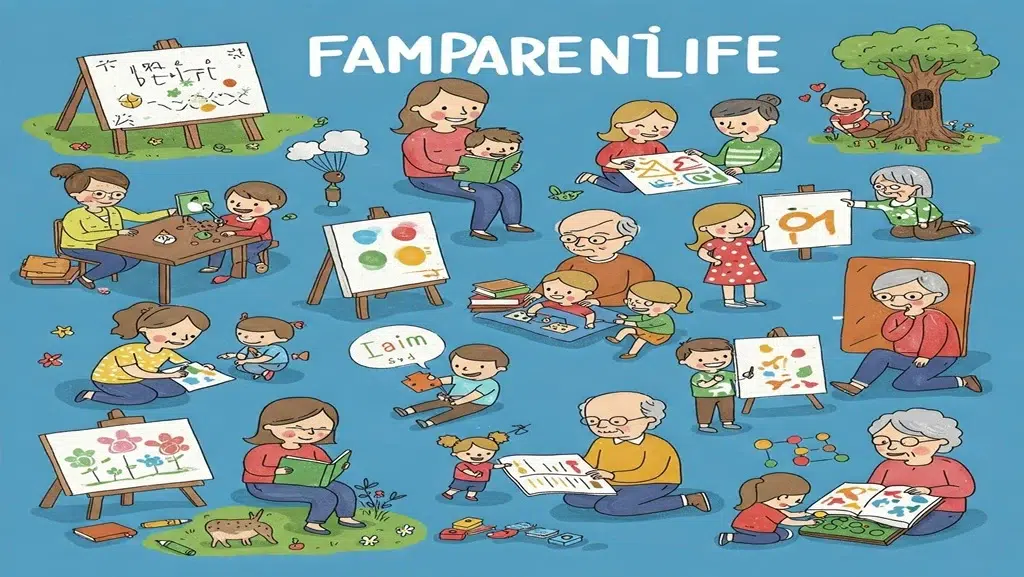Parenting is a journey filled with opportunities to nurture, teach, and grow alongside your children. In today’s fast-paced world, integrating learning activities into family life—what we’ll call famparentlife—is a powerful way to foster connection, curiosity, and lifelong skills. This article explores practical, fun, and meaningful ways to weave education into everyday routines, ensuring that learning becomes a natural part of your family’s story.
Why Learning Activities Matter in Famparentlife
Learning Activities Famparentlife aren’t just about academics; they’re about creating shared experiences that strengthen relationships. Whether it’s baking together, exploring nature, or playing games, these moments build trust, communication, and joy. For parents, famparentlife means embracing the role of both caregiver and collaborator, guiding children through discovery while learning alongside them.
Key Benefits:
- Stronger Family Bonds: Collaborative activities create lasting memories.
- Holistic Skill Development: Kids gain problem-solving, creativity, and emotional intelligence.
- Lifelong Learning Mindset: Children learn to view challenges as opportunities.
Types of Learning Activities Famparentlife
1. Indoor Adventures
Transform your home into a hub of exploration:
- Science Experiments: Use household items for volcano eruptions (baking soda + vinegar) or DIY slime.
- Reading Together: Start a family book club or act out stories to boost literacy and imagination.
- Art Projects: Paint, craft, or build models to encourage creativity.
2. Outdoor Explorations
Nature is the ultimate classroom:
- Nature Scavenger Hunts: Create lists of items to find (e.g., pinecones, specific leaves).
- Gardening: Teach responsibility by growing herbs or vegetables.
- Physical Play: Sports, hiking, or yoga promote health and teamwork.
3. Educational Games
Turn playtime into learning time:
- Board Games: Classics like Scrabble or Monopoly teach strategy and math.
- Puzzles: Enhance critical thinking and patience.
- Role-Playing: Pretend play (e.g., grocery store, doctor visits) builds social skills.
Read More – chelsea acton famous parenting
Seamlessly Integrating Learning into Daily Routines
You don’t need extra hours in the day to prioritize famparentlife—learning can happen organically:
- Mealtime Math: Involve kids in measuring ingredients or dividing portions.
- Chores as Lessons: Sorting laundry teaches organization; cooking introduces chemistry.
- Bedtime Stories: Discuss themes or predict plot twists to boost comprehension.
Pro Tip: Let kids take the lead occasionally. Ask, “What would you like to explore today?”
Balancing Work and Family Learning
Juggling responsibilities can be tough, but small efforts yield big rewards:
- Micro-Learning: Use 10-minute windows for quick activities (e.g., a riddle during breakfast).
- Collaborate Tasks: Turn errands into adventures—calculate grocery costs together.
- Set Priorities: Designate “family learning nights” instead of screen time.
Technology in Learning Activities Famparentlife: Friend or Foe?
Tech can enhance learning when used mindfully:
- Educational Apps: Try Duolingo for languages or Khan Academy Kids for diverse subjects.
- Virtual Field Trips: Explore museums or zoos online.
- Set Boundaries: Balance screen time with hands-on activities.
Community Resources to Enrich Your Learning Activities Famparentlife
Connect with local and global networks:
- Libraries: Offer free workshops, book clubs, and maker spaces.
- Parent Groups: Share ideas through platforms like Facebook or Meetup.
- Workshops: Attend family-friendly events at museums or nature centers.
Conclusion: Embrace the Journey
Learning Activities Famparentlife isn’t about perfection—it’s about presence. By infusing learning into everyday moments, you’re not just teaching skills; you’re nurturing a love for discovery that lasts a lifetime. Start small, stay flexible, and celebrate the joy of growing together.
Read More – chelsea acton famousparenting
3 Short FAQs About Learning Activities Famparentlife
1. How can busy parents find time for learning activities?
Focus on quality over quantity. Integrate learning into existing routines, like counting steps during walks or discussing science while cooking. Even 10 minutes of focused interaction makes a difference.
2. What activities work for families with kids of different ages?
Choose adaptable projects:
- Younger kids: Sensory play (e.g., water tables).
- Older kids: Science kits or family debates.
Mix group activities (e.g., puzzles) with individual tasks tailored to each child’s level.
3. How do I handle resistance from kids who dislike “educational” activities?
Frame learning as play. Use their interests—if they love dinosaurs, visit a virtual paleontology exhibit or create a dino-themed art project. Let them choose activities to foster enthusiasm.
Read Also –



